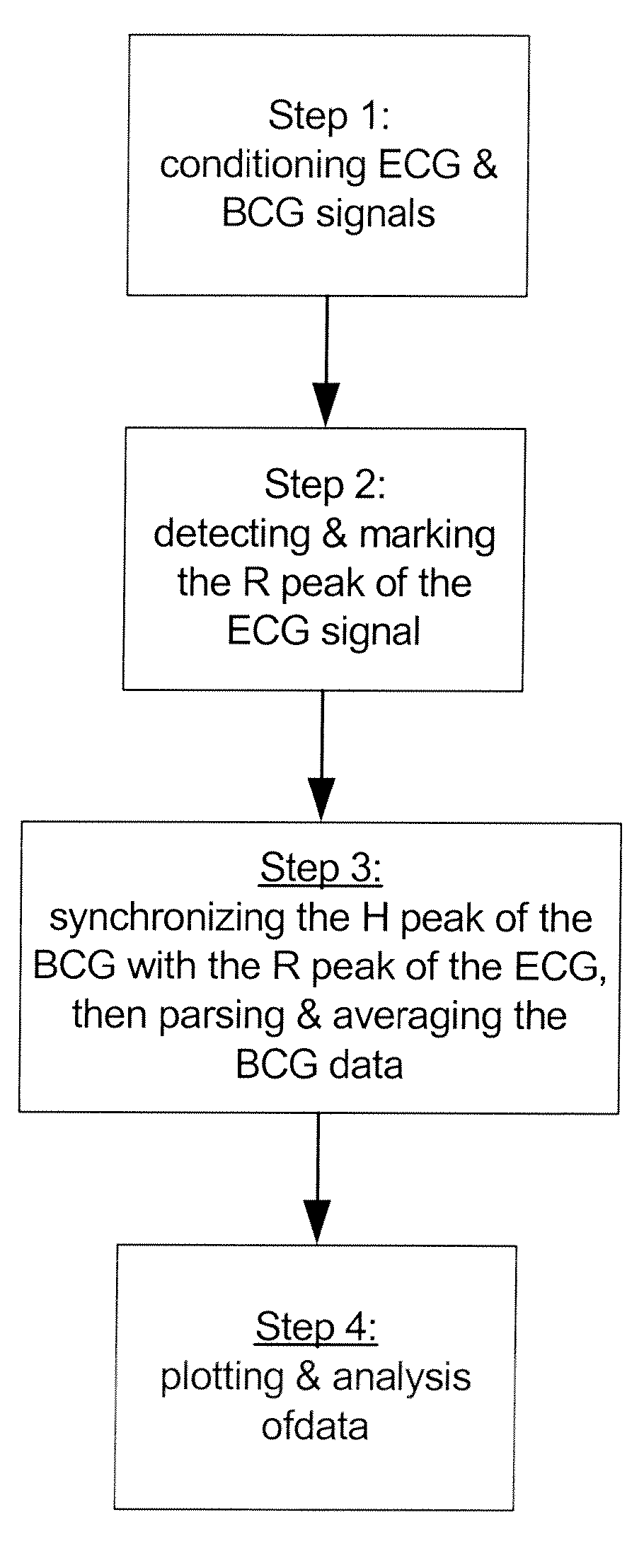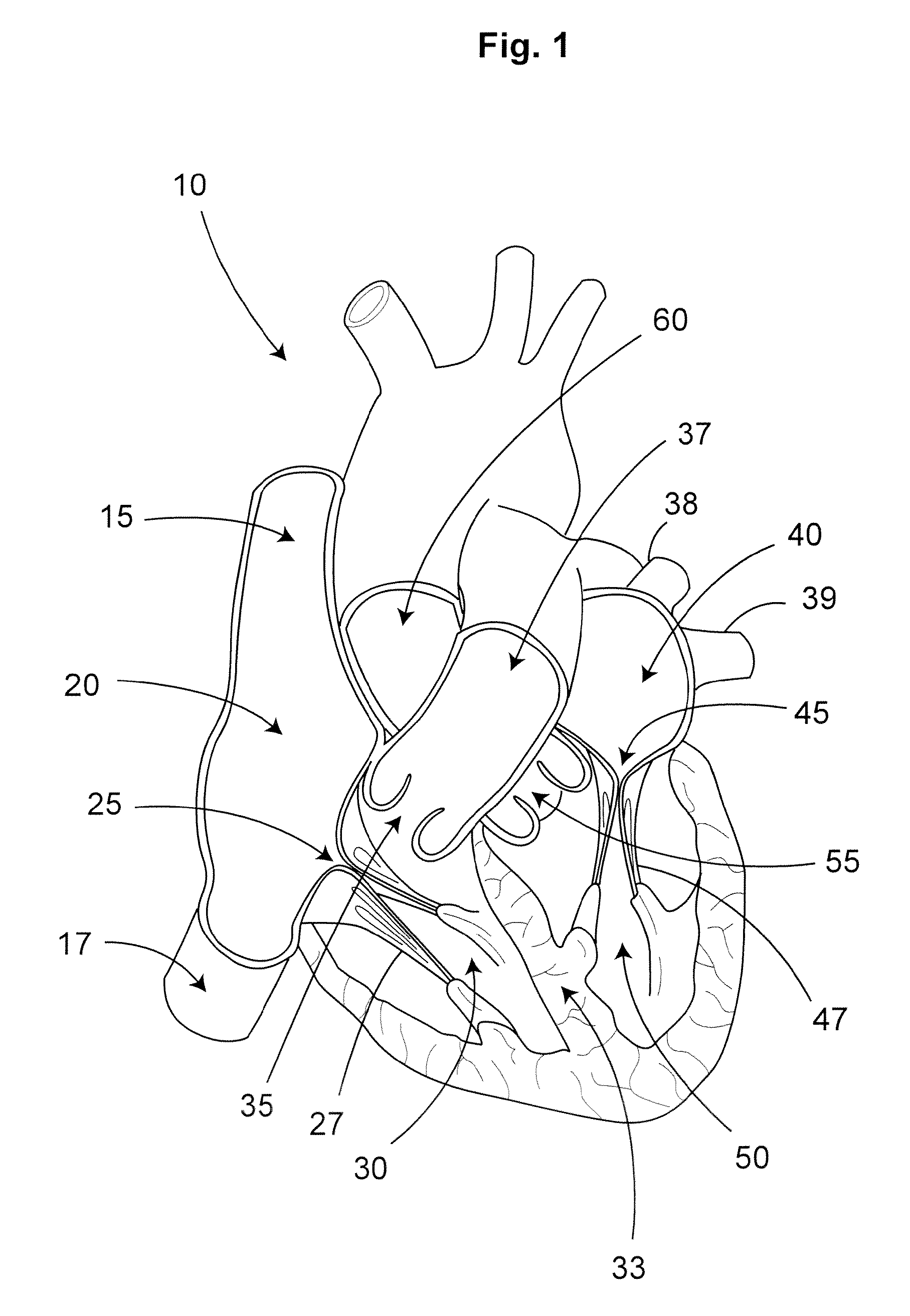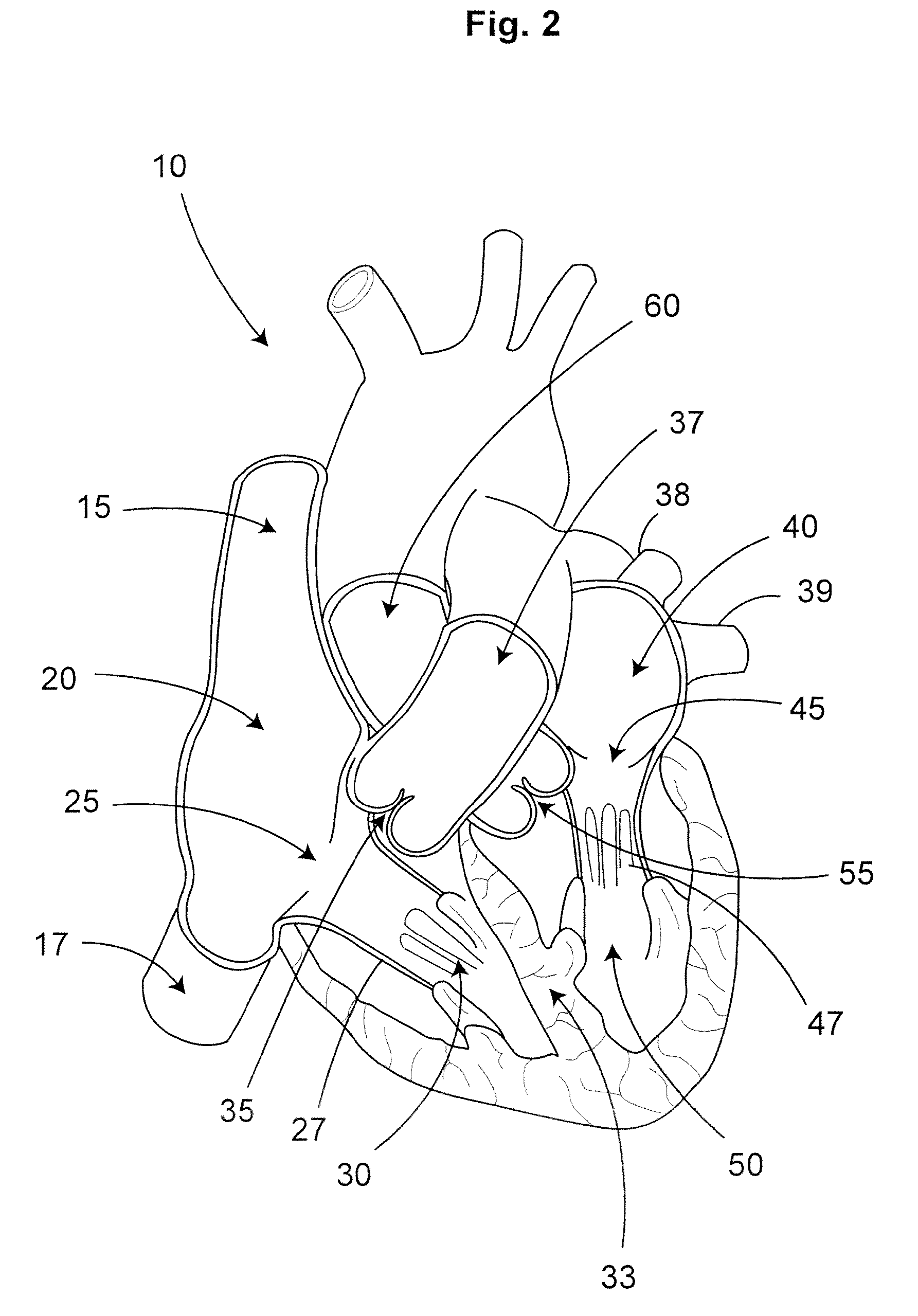Monitoring physiological condition and detecting abnormalities
- Summary
- Abstract
- Description
- Claims
- Application Information
AI Technical Summary
Benefits of technology
Problems solved by technology
Method used
Image
Examples
example 1
[0090]An exemplary system of the present invention was configured as shown in Fig. comprising the following components:[0091]1. CSA 750C Multi-Parameter Monitor (CAS Medical Systems Inc.) for monitoring blood pressure, heart rate and blood oxygen levels.[0092]2. Burdick® EK10 12 lead, single channel electrocardiograph (Cardiac Science Corp., Bothell, Wash., USA) for detection and transmission of ECG signals.[0093]3. Brüel & Kjær® (Brüel & Kjæer is a registered trademark of Brüel & Kjær Sound & Vibration; Measurement A / S, Nærum, Denmark) Type 4381 accelerometer coupled with a Brüel & Kjær® Type 2635 charge amplifier for detection and transmission of BCG signals.[0094]4. LabVIEW® (LabVIEW is a registered trademark of National Instruments Corp., Austin, Tex., USA) 8.2 data acquisition system installed on an IBM laptop computer, for concurrently receiving ECG and BCG signals from the ECG and BCG instruments[0095]5. A software program comprising the algorithms described herein for condit...
example 2
[0112]FIG. 12a shows the raw, unconditioned ECG and BCG signals produced by a healthy individual with a normally function cardiovascular system, during a pre-exercise non-stressed resting-stage period. Additional cardiophysiological data collected as described in Example 1, were stored in the system's database. FIG. 12b shows the raw, unconditioned ECG and BCG signals produced by the same individual after a period of physical exercise administered as outlined in Example 1. The R-peaks of the ECG signal during the pre-exercise resting stage (FIG. 12a) were used by the heuristic algorithms to mark and synchronize the BCG H-peaks with said concurrently collected ECG R-peaks. The heuristic algorithms subsequently marked and correlated the subsequent I-J-K-L-M-N peaks and produced the synchronized ECG-BCG cycle patterns shown in FIG. 13a. In a similar way, the R-peaks of the ECG signal during the post-exercise stage (FIG. 12b) were used by the heuristic algorithms to mark and synchronize...
example 3
[0113]FIGS. 14a and 14b show the raw, unconditioned ECG and BCG signals produced by an individual before and after stress induced by physical exercise as described in Example 1. This individual had previously experience and recovered from a mild heart attack, and is in the process of modifying their lifestyle in order to strengthen their cardiovascular system. This individual's post-exercise heart rate was about 65%-70% (5 beats in a 3-second interval) greater than the pre-exercise rate (3 beats in a 3-second interval) (FIGS. 14a and 14b). More significant, however, are the changes that are evident after the signal conditioning to remove the background noise and synchronization of the BCG signals with the ECG signals (FIGS. 15a and 15b), that show the increased heart rates is accompanied by increased physical intensities in the movements of the heart muscles and valves (FIG. 15b). However, comparison of the pre- and post-exercise synchronized BCG signals show that the H-I-J-K-L-K-M-...
PUM
 Login to View More
Login to View More Abstract
Description
Claims
Application Information
 Login to View More
Login to View More - R&D
- Intellectual Property
- Life Sciences
- Materials
- Tech Scout
- Unparalleled Data Quality
- Higher Quality Content
- 60% Fewer Hallucinations
Browse by: Latest US Patents, China's latest patents, Technical Efficacy Thesaurus, Application Domain, Technology Topic, Popular Technical Reports.
© 2025 PatSnap. All rights reserved.Legal|Privacy policy|Modern Slavery Act Transparency Statement|Sitemap|About US| Contact US: help@patsnap.com



